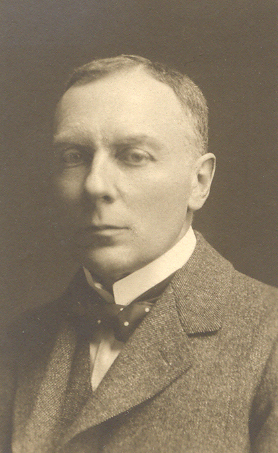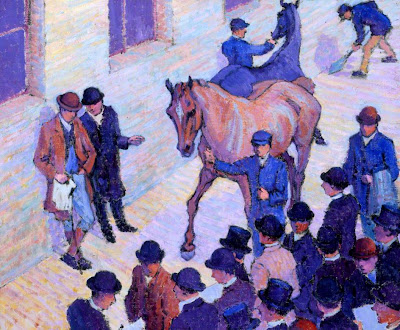The model in an enigmatic set of photographs taken by Mervyn O'Gorman, thought to be
the earliest examples of colour photography, had been identified. Previously known only as Christina it was thought that the young girl in the red bathing suit was O'Gorman's daughter.
However, Christina's true identity came to light when Stephen Riddle, a retired technician, contacted Colin Harding, curator at the National Media Museum with a set of stereoscopic slides by O’Gorman.
The 16 year old model was revealed to be Christina Elizabeth Frances Bevan, the elder daughter of Edwyn Robert Bevan, a classical scholar, archaeologist and philosopher, and his wife, the Honourable Mary Waldegrave.
Mervyn O’Gorman trained first as an electrical engineer before becoming an aircraft engineer and Superintendent of the Royal Aircraft Factory but in his spare time he enjoyed taking photographs and was a pioneer of the Autochrome process.
At the time of the 1911 census, two years before these photographs were taken, Edwyn lived in a substantial property called Sun House on the Chelsea Embankment with his wife and two daughters employing a butler, housekeeper, lady's maid, cook, housemaid and a kitchenmaid.
It was a far cry from the lifestyle of Sylvanus Bevan, 80 and his wife Ann, 79, who had retired from farming and moved to The Sycamores, just a stones throw away from the home where Sylvanus grew up at Bay View Farm, Overton, Gower.
Yet the strawberry blonde 16 year old and the old man and his wife share a common ancestry, tracing their family lines back to Jenkin-ap-Evan and his wife Elizabeth After who lived in Rhossili on the Gower peninsula.
Jenkins' son William, known as William Bevan the Quaker, moved to Swanzey where he practiced his faith and spent two years in prison for his refusal to pay Church Rates and Tithes.Descendants of William founded the famous Plough Court Pharmacy, bought into Henry Thrales Anchor Brewery and married into the Barclay family of bankers.
Christina could trace her ancestry back through her grandfather Robert Cooper Lee Bevan to another Silvanus Bevan and his parents Timothy Bevan and Elizabeth Barclay, back to Jenkin-ap-Evan, the ancestor who Anglicised the Welsh name.
Back home in Gower, Jenkin's other son Francis married and moved into Oxwich Castle where the Bevan family farmed for more than two hundred years, travelling down numerous Francis's and Sylvanus's until another Sylvanus married his cousin Ann in 1855.
The photographs O'Gorman took in 1913 are the subject of an exhibition entitled Drawn by Light on show at the National Media Museum, Bradford until June 21, 2015.
When my twitter follower urged me to pass on the news of Christina's identity I little suspected I would find a link to the ethereal girl in red and the Bevan family from Gower.












